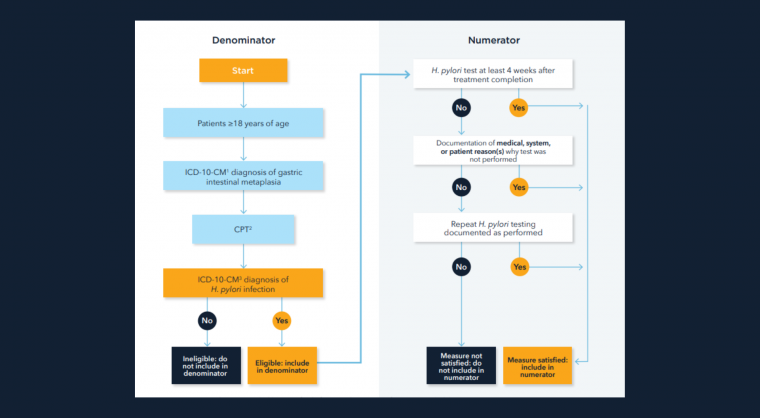Gastric intestinal metaplasia (GIM) is a histological finding which may identify patients at high risk for gastric cancer, the third leading cause of cancer deaths worldwide. The most common type of gastric cancer is intestinal-type, non-cardiac, which is usually associated with chronic H. pylori infection (80% of global burden) via stepwise mucosal changes: normal mucosa → chronic gastritis → atropic gastritis → GIM → gastric adenocarcinoma.
AGA’s evidence-based guidelines on the management of GIM suggest testing/treating H. pylori in all patients with GIM and pursuing high quality endoscopic surveillance exams in some patients. Based on this guideline, the AGA Quality Committee has developed a trackable quality measure for you to follow in your practice.
Quality measure to track
Percentage of patients at least 18 years of age with a diagnosis of gastric intestinal metaplasia and Helicobacter pylori infection who have confirmed eradication of H. pylori at least 4 weeks after completion of treatment.
You can track your compliance with this measure using these resources:
Find out more about how and why this quality measure was developed in this Gastroenterology editorial from the AGA Quality Committee.














